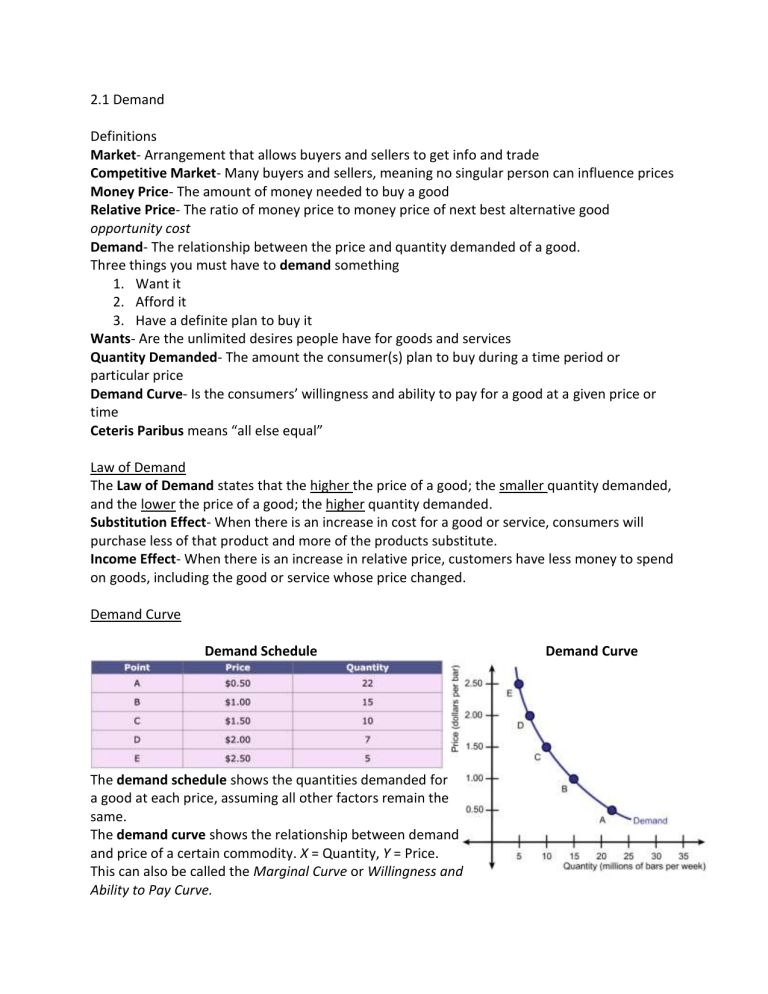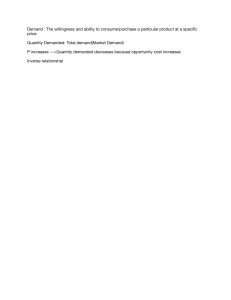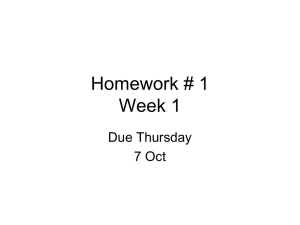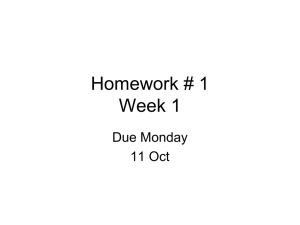Economics: Understanding Demand, Supply, and Market Equilibrium
advertisement

2.1 Demand Definitions Market- Arrangement that allows buyers and sellers to get info and trade Competitive Market- Many buyers and sellers, meaning no singular person can influence prices Money Price- The amount of money needed to buy a good Relative Price- The ratio of money price to money price of next best alternative good opportunity cost Demand- The relationship between the price and quantity demanded of a good. Three things you must have to demand something 1. Want it 2. Afford it 3. Have a definite plan to buy it Wants- Are the unlimited desires people have for goods and services Quantity Demanded- The amount the consumer(s) plan to buy during a time period or particular price Demand Curve- Is the consumers’ willingness and ability to pay for a good at a given price or time Ceteris Paribus means “all else equal” Law of Demand The Law of Demand states that the higher the price of a good; the smaller quantity demanded, and the lower the price of a good; the higher quantity demanded. Substitution Effect- When there is an increase in cost for a good or service, consumers will purchase less of that product and more of the products substitute. Income Effect- When there is an increase in relative price, customers have less money to spend on goods, including the good or service whose price changed. Demand Curve Demand Schedule The demand schedule shows the quantities demanded for a good at each price, assuming all other factors remain the same. The demand curve shows the relationship between demand and price of a certain commodity. X = Quantity, Y = Price. This can also be called the Marginal Curve or Willingness and Ability to Pay Curve. Demand Curve A Change in Demand External factors that were once assumed to remain the same can alter the curve. When demand increases the graph shifts to the right When demand decreases the graph shifts to the left Any movement on the curve is called a change in quantity demanded. Any shift on the graph is called a change in demand Factors Affecting Change Prices of Related Goods- Price changes in compliments and substitutes will also affect the demand for the original product. Expected Future Prices- If the price is predicted to rise/fall, current demand will increase/decrease Income- When income increases consumers will buy more Normal Good- Demand increases as income increases Inferior Good- Demand decreases as income increases Expected Future Income and Credit- Like future prices if income is expected to rise in the future willingness and ability to buy will increase. This is also true with credit. Population- Demand will increase if population increases. Preferences- Preference determines value that consumers place on a good. As popular preference changes so will demand.







